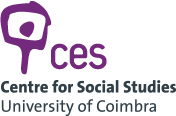Women as judges and Public Prosecutors in Portugal: paths, experiences and representations
In the last decades, a significant transformation of legal professions has been its increasing feminization. If, until 1974, the judiciary and the Public Prosecution were professions forbidden to women, nowadays in a total of 1970 Portuguese judges, 1040 are women (53%). In the Public Prosecution, 49,3% of the total of magistrates are women and the percentage of female prosecutors on the basis of the career goes beyond that number (61,3%). The share of women in the judiciary and Public Prosecution is visible even at the Centre for Judicial Studies, where currently 85% of the attendees are women. These numbers, as well as the growing role of some female magistrates, have attracted the attention of the media and of some sectors of the judiciary. However, if in other countries we can find studies on this fact, in Portugal this analysis has not yet been performed, so that interpretation on the feminisation of the judiciary leads back, mainly, to the increasing number of women in the profession still relying on speculation and often in stereotypes. In this scenario a question becomes eminent: when it comes to the feminisation of the judiciary, does one seek to reflect only the increase in the number of women in the judiciary or on the contrary, is it possible to speak about a different way to apply law and do justice marked by a gender perspective? Looking to fill this gap in socio-legal research, the general objective of this project is to respond to this question by studying the pathways and professional experiences of female judges and Public Prosecutors in Portugal and also to understand the representations, either by the legal professionals or by society regarding the role of those in the Portuguese justice system. To achieve this goal, the project will involve six specific goals. The first is to examine women's access to the various legal professions and professional organizations. With the construction of indicators we aim to, on the one hand, evaluate the route allowed to and taken by women since their admittance to law school and, on the other hand, realize the specific path to the judiciary. The second is to understand if the growth of women in legal careers has been accompanied by equal growth of opportunities for career development. We will be focusing on two aspects. First of all, on the evolution of the representation of women in positions of spotlight or responsibility (e.g., chair of the courts, chair of the sections, coordination of the public prosecution). We are interested in knowing whether the internal organization of the courts, the rules of progression, recruitment and selection, and training, either by fighting discrimination or by promoting positive discrimination, make it possible or not for women to grow, progress and exercise leadership positions. Secondly, we will focus on the areas of specialization of women in the judiciary, which may be related to their own career options or with the imposition of the internal logic of hierarchical organizations. The third objective is to challenge the female magistrates about their working conditions, work environment, relationships with peers and professional satisfaction. A fourth objective is to acknowledge if there is a female model in the management and administration of justice and if there is a female model in judging. By mapping the female magistrates representation of themselves, of their male peers and of any other legal professionals (e.g. lawyers), we want to know: if there are significant differences between men and women in administrative and judicial practice; if there is an adequacy of training of the gender issues and inequality between men and women; if there is or not, the reproduction of principles of law enforcement based on the representation of the neutral professional, without gender identity, responsible for implementing the letter of the law; if the representations of the role of women in the judiciary differs depending on the area of law (e.g. criminal or family). The fifth objective is to ascertain the perceptions of female magistrates on the application of law, particularly in legal matters where the gender perspective tends to be relevant, for example, domestic violence or employment discrimination. Finally, we aim to establish, through analysis of the press and population surveys, the perceptions of the citizens on female judges and Public Prosecutors: which image of female judges and Public Prosecutors the media tend to replicate? Is there the use of "alibi-women", with high positions, to make visible the presence of women in the judiciary? Do the stereotypes attributed to women in society transfer to a female magistrate, or is this a neutral profession in a gender perspective? This project is intended, therefore, to understand whether there is a real feminisation of justice, established not only in quantitative but also qualitative terms, and whether it contributes to the emergence of a new legal culture.
Publication of book, scientific papers and communications at international/national seminars; internacional conference
Associação Sndical dos Juízes Portugueses; Sindicato dos Magistrados do Ministério Público
Conceição Gomes (coord)
Élida Lauris
Madalena Duarte
Maria Teresa Couceiro Pizarro Beleza
Paula Fernando

